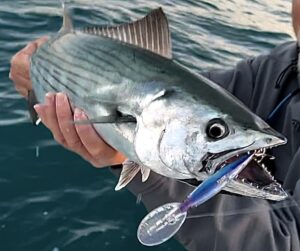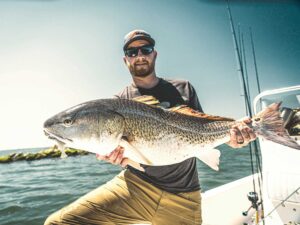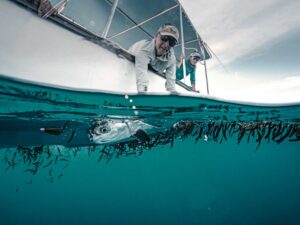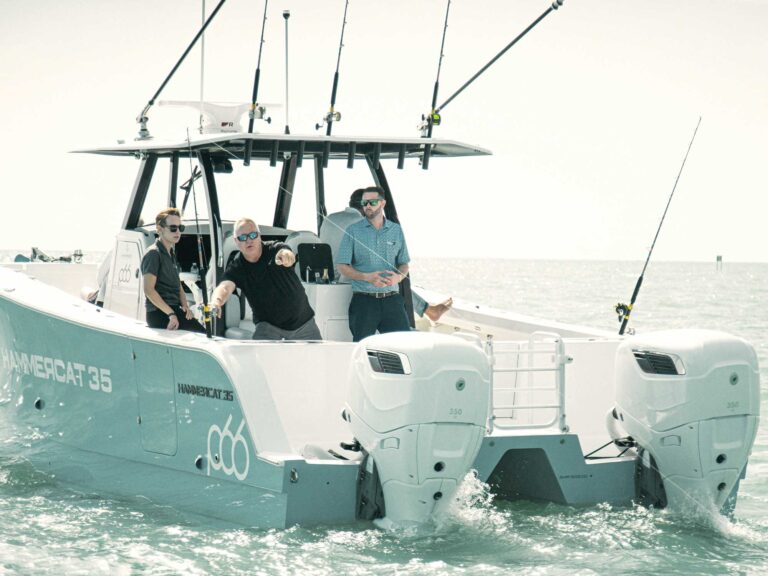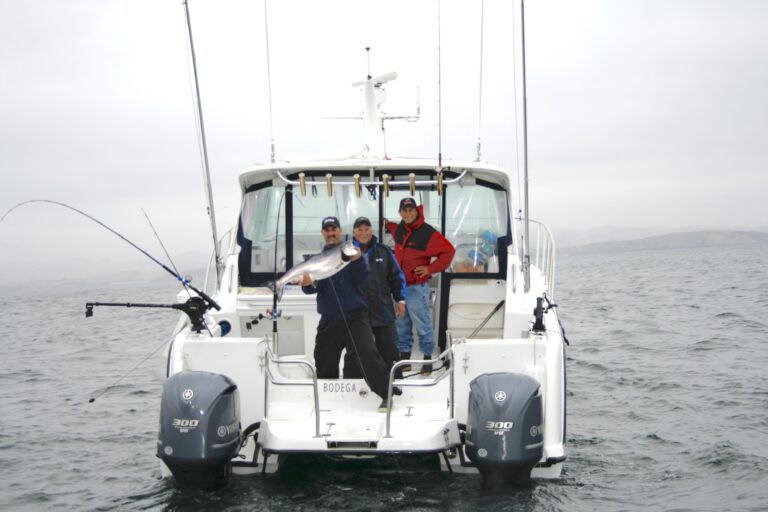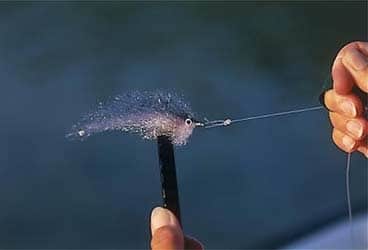
A female artist who I can’t quite name sang a song in the 1960s called “Little Things Mean a Lot,” which pointed out the little things a man could do in a relationship that meant a lot to a woman. After 30 years of marriage, my wife will testify to the fact that I didn’t pay too much attention to the lyrics of that song. But over the years, I have paid attention to the little things that mean a lot to the saltwater fly fisherman. Little things that often get overlooked in our quest to catch fish. Little things that can take us out of the novice class in a shorter length of time and make us more efficient anglers. Little things that can make or break a trip to the shore.
For example, when I made my first stripping basket, I drilled two 3/8-inch holes in the corners for attaching a bungee cord. When I used it for the first time on a jetty, two things happened when I was taking the basket off to change reel spools that caused me to cut my trip short.
When I unhooked the right side of the cord, the rubber cup that protects the end of the hook got caught on the side of the hole and fell down between the rocks. No big deal; I had some extras at home. As I was setting the basket down, though, the other end of the cord slipped out of the oversized hole and fell irretrievably down a rock crevice, joining the rubber cup in the dark depths of the jetty.
I fished for a bit with the basket sitting on a rock at my feet, feeling and looking like a fool, until a gust of wind blew it into the water, where it sailed away like a miniature powder-blue barge.
After that experience, I began epoxying the rubber cups onto the end of my bungee cords. Now when I build a new stripping basket, I drill an oversized hole on one side, in the event I have to relieve myself of the basket in an emergency situation. On the other side, I drill a hole about the same diameter as the protective cup, so that it takes some effort to push the hook through the hole. I haven’t lost a rubber cup, bungee cord or stripping basket since.
Keeping your hooks sharp is a little thing that often gets overlooked by fly fishermen. Many anglers dutifully crimp the barb down and sharpen the hook before tying a fly, and then the finished product never sees a file for the rest of its life.
Get into the habit of periodically checking your hooks for sharpness during use. Retrieving a fly across a sandy bottom will quickly dull a hook point, as will repeated hook-ups with hard-mouth fish. The occasional sloppy backcast can cause a fly to strike rocks, shells or other debris, bending or possibly even breaking the hook point.
Make it a point to carefully check your fly after freeing it from an underwater snag. The force used to free a fly can be enough to bend or break a hook point. And don’t forget to check your leader for fraying or nicks that may have occurred while trying to free it.
Every saltwater fly rodder’s gear should include a pair of pliers and a hook file. Bent points can usually be straightened with the pliers, and hooks can be resharpened on the spot with the file.
If you have yet to discover the joys of tying your own flies and are buying them from catalogs or fly shops, it’s a good idea to check them for sharpness and sharpen them as required before using them. If you tie your own flies and aren’t sharpening the hooks before you begin, start doing so. I haven’t seen too many hooks come out of the box that couldn’t use a little work with the file.
One final word about sharp hooks: At the end of the season, before you start replenishing your depleted fly stocks for next year, go through the ones that made it through this season and sharpen any that have lost their edge. Keeping your hooks sharp is a little thing that will pay big dividends down the line.
Knots represent another area of saltwater fly fishing where little things mean a lot. A simple overhand knot in a leader can reduce its breaking strength by up to 50 percent. No one intentionally ties overhand knots in their leaders, but they get there just the same. We all know them as wind knots, and they usually appear after a cast goes awry.
Whenever you have a cast go bad, immediately strip in the line and check the leader for wind knots. If one is found, it can usually be worked out rather easily because it has not had a chance to tighten up due to additional casting or fighting a fish.
If a knot is found that has already been pulled tight, resist the natural tendency of taking a fly and trying to work the knot apart with the hook point. A sharp point can nick or cut the leader material that can go undetected until the leader pops under the weight of a fish. It’s better to rebuild the leader or tie on a new one.
Knots can sometimes be a pain to tie, especially under adverse conditions such as on a rocking boat, on a wave-swept jetty or under poor lighting. But whether you’re in the comfort of a bonefish lodge with a cool drink at your side or out on the water, if a knot doesn’t “seat” itself properly when pulled tight, cut it off and re-tie it. Too many fish are lost each season due to poorly tied knots, and there’s no sense adding your name to the list.
In recent years, the loop knot has become popular for tying the fly to the tippet. I personally like this knot as it allows the fly to swing free and thus gives the fly a greater range of movement in the water. However, there’s a small problem with this knot, especially in the lighter class tippets.
Scott Smith and I were fishing a Cape Cod beach early one October morning. We arrived before first light and caught a few schoolie bass in the 24-inch range. As the sky began to lighten, we began to catch fish on almost every cast, and the action lasted through the entire drop of the tide.
Scott had worked his way down the beach during the morning, and when we met up around noon and compared notes, we discovered we both had encountered the same problem.
We were using 10-pound tippets with loop knots and found that on about every sixth or seventh fish, the line would break right at the eye of the hook. We lost about three flies apiece before we wised up and began cutting the fly off and re-tying it after every fifth fish. We discovered that the pressure from fighting fish would cause a tight “V” to form in the line at the hook eye (as opposed to the smooth curve of line on a new knot), and eventually, the line would break at this point.
I’ve found that constant casting with a loop knot will also weaken the line at the hook eye. I’ve experienced situations where, after 20 minutes of casting were followed by a solid hookup, the line would part. I now routinely cut the fly off and re-tie it with a new loop knot after every 30 or 40 casts. Again, little things.
There are little things that should be kept in mind while fishing at night. Besides periodically checking hook points for sharpness and leaders for wind knots, flies should be checked from time to time to make sure they haven’t picked up bits of weed or that the fly’s tail hasn’t become wrapped around the bend of the hook. Most experienced fly rodders have developed a sixth sense and can usually tell when a fly has picked up a piece of weed or has become fouled on the retrieve. If you haven’t developed this “feel” yet, then it’s a good idea to check your fly after every third or fourth cast.
I use my flashlight as little as possible when fishing after the sun goes down. I check hook points and leaders by touch, and a fly held up against the night sky will usually be silhouetted enough by the available light to be able to tell if it’s trailing weed or has become fouled. I use the light to change flies, but I take care to make sure no stray beams hit the water.
I do this by wearing my light around my neck on a lanyard long enough so that the end of the flashlight is about even with my belt. When I change flies, I first turn my back to the water I’m fishing before turning on the light. The light’s beam is directed into my stripping basket, and I make the fly change with my hands contained within the basket. Working within the confines of the stripping basket also has the advantage of catching any fly that might be dropped by cramped, tired fingers.
One last little thing that means a lot when night fishing is to make sure you have a spare set of batteries for your flashlight. Not only is a dead light an inconvenience, but it can be downright dangerous. I remember one night fishing one of the finger jetties that dot the length of Long Beach Island, New Jersey, when my batteries expired. Naturally, I didn’t have a spare set with me. Picking my way back to the beach along the rocks in the dark was an experience I’m not looking forward to repeating.
Tackle maintenance is another little thing that often gets overlooked by the saltwater fly rodder. Good quality tackle isn’t cheap, and it’s a shame for a piece of equipment to come to a premature end simply because it wasn’t cared for properly. And here’s something to think about: How would you feel after losing the fish of a lifetime because of tackle failure brought on by a lack of maintenance?
Throughout the season, rods and reels should be given a periodic inspection. Rods should be checked for bent, broken or grooved guides. Occasionally run a piece of nylon stocking through each guide to check for microscopic burrs that can cut the coating on fly lines and fray backing. Check reels for loose screws, loose or missing counterbalance buttons and for excessive wear on moving parts. Make sure the drag is working smoothly and isn’t sticking.
Fly lines should be washed several times during the season, especially if they receive heavy use. Dirt on a line increases friction as the line shoots through the guides, thereby decreasing casting distance. On the retrieve, a dirty line can cause undue wear on guides. Check line coatings for cracks or nicks, and don’t forget to check leader and backing connections.
While we’re on the subject of fly lines, make it a point to stretch your line before each use. I know when you finally reach your fishing destination the first thing you want to do is strip line off the reel and start fishing. But look at it this way: You can spend the extra two or three minutes it takes to stretch your line before you start fishing, or you can spend three or four minutes (sometimes more) untangling a jumbled mass of fly line each time it gets wedged in the stripping guide. Trust me on this one; I’m talking from experience!
Little things. They may not seem like much when taken on an individual basis, but then that’s what makes them little things in the first place. When you string them together and make them a part of your saltwater fly-fishing routine, though, you’ll discover the lady in the song was right. Little things really do mean a lot.

